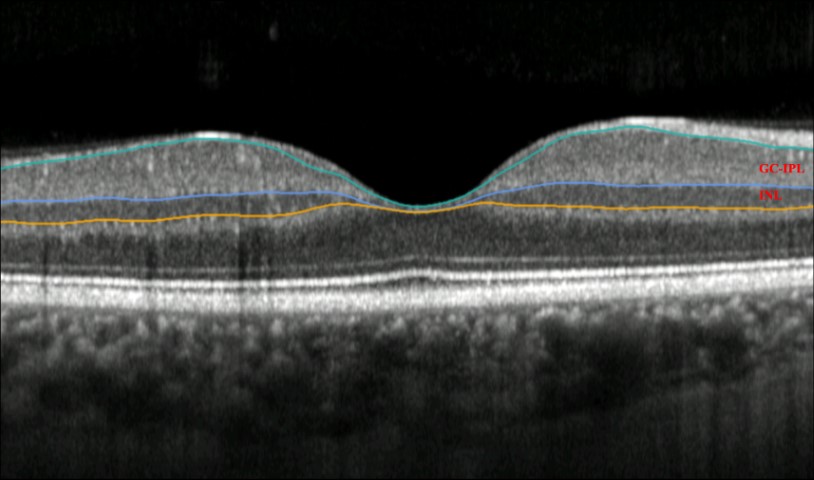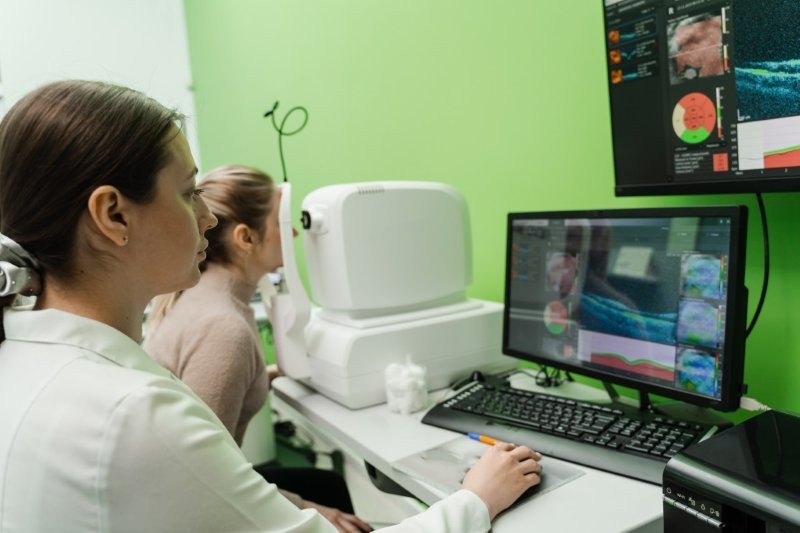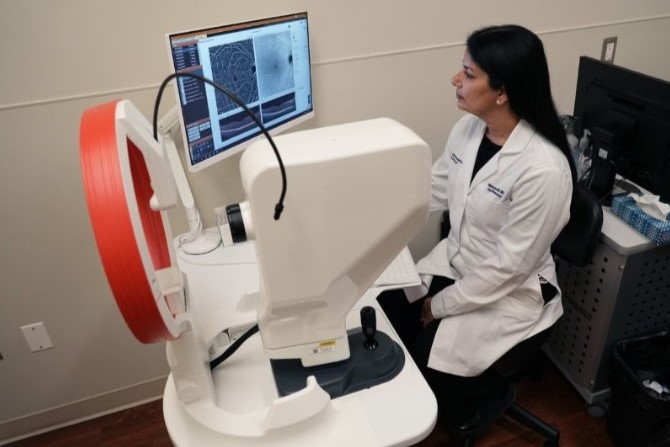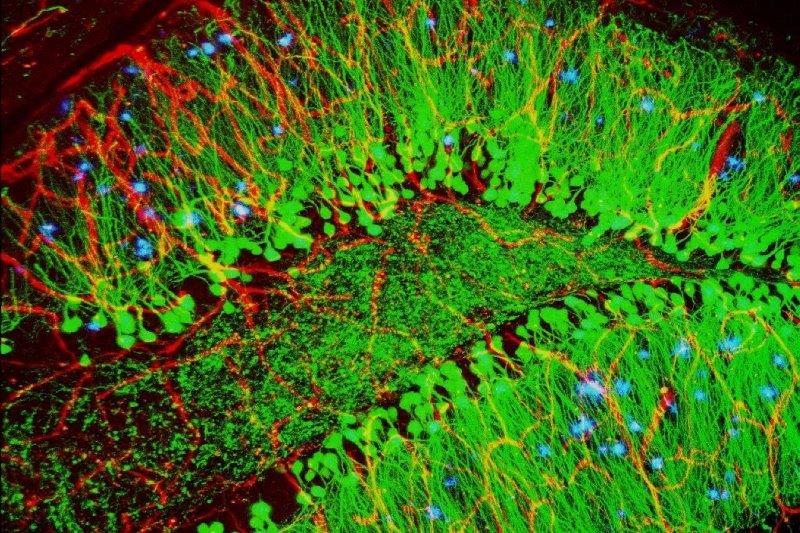OCT and AI flag Parkinson’s risk
Researchers at Moorfields Eye Hospital said they identified markers from OCT retinal scans which identified Parkinson’s disease in patients, on average, seven years before they were diagnosed.
The team, led by Dr Siegfried Wagner and Professor Pearse Keane of Moorfields and UCL Institute of Ophthalmology, found Parkinson’s patients had differences in thickness in their retina’s inner nuclear layer (INL) and ganglion cell-inner plexiform layer (GCIPL). Using artificial intelligence (AI), images from INSIGHT, the world's largest database of retinal images and associated clinical data, were screened for these differences. The team then validated their model using data from the UK Biobank.

An OCT scan of a retina, with the highlighted individual layers
Writing in Neurology, the team said data from eye scans has previously revealed signs of Alzheimer’s disease, multiple sclerosis and, most recently, schizophrenia, in the emerging field of oculomics.
While we’re not yet in a position to predict whether an individual will develop Parkinson’s, we hope this method could soon become a pre-screening tool for people at risk of disease, said Dr Wagner. “Finding signs of a number of diseases before symptoms emerge means that, in the future, people could have the time to make lifestyle changes to prevent some conditions arising, and clinicians could delay the onset and impact of life-changing neurodegenerative disorders.”
Exploring whether progression of GCIPL atrophy is driven by brain changes in Parkinson’s disease or if INL thinning precedes GCIPL atrophy could help explain the mechanism and determine whether retinal imaging could support the diagnosis, prognosis and complex management of Parkinson’s patients, researchers concluded.
























